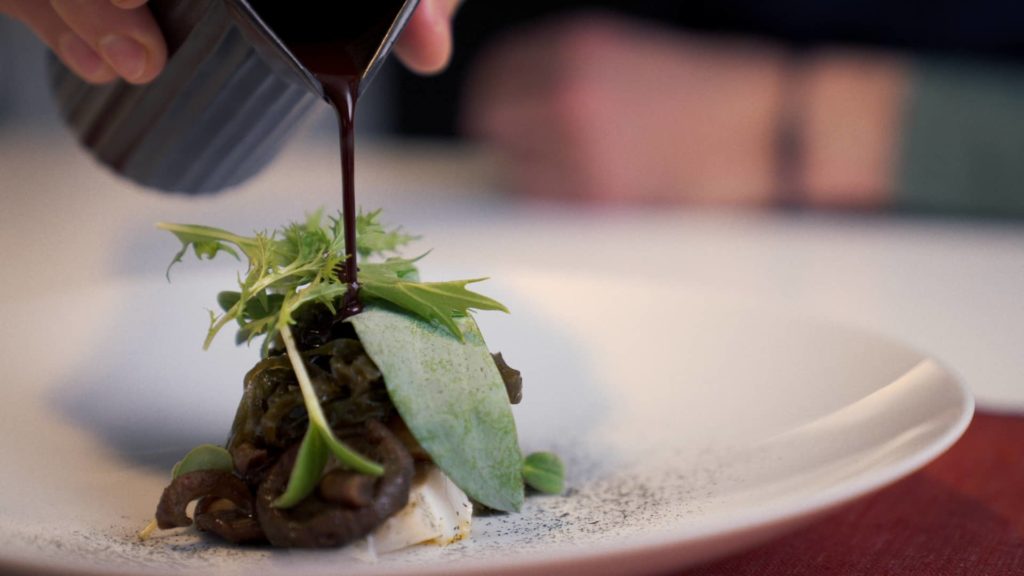Almaviva: a fine wine at the crossroads of Chilean terroirs and French expertise
In 1997, two major families in the world of wine decided to combine their expertise and create Almaviva in Puente Alto, in the Maipo Valley in Chile. As the 25th vintage of Almaviva arrives on tables around the world, Anthony Moses, Managing Director of Twins, sat down with Manuel Louzada, Managing Director of Viña Almaviva.

A fine wine, born out of a great collaboration

Like everyone who knows Viña Almaviva, Anthony Moses, owner and co director of the Bordeaux wine merchant Twins, often says: “Almaviva is more than just wine”. Almaviva is a wine with soul, thanks to its creators, Baroness Philippine de Rothschild and the Guilisasti and Larrain families, at the head of Viña Concha y Toro.
Manuel Louzada, Managing Director of Viña Almaviva, describes their collaboration as “a wonderful story”. In the 1990s, Baroness Philippine was looking for a terroir capable of producing an exceptional Cabernet Sauvignon. She found this unique location in the highlands of Chile, at an altitude of 650 metres, thanks to the owners of Viña Concha y Toro, great connoisseurs of the terroirs of Chile. Almaviva produced its first vintage right away, in a vineyard that now extends across 60 hectares, on the north bank of the Maipo River. At the foot of the Andes, Cabernet Sauvignon finds ideal conditions for maturation, with significant variations in temperature and very limited rainfall.
Almaviva: the journey of a fine wine
Right from the start, the goal of the collaboration was to produce a fine wine in Chile, thanks to “a magical terroir” and the expertise in Cabernet Sauvignon acquired by Château Mouton Rothschild. Across the history of Almaviva, only three winemakers have been at the helm. The first was Patrick Léon, from Château Mouton Rothschild. Next, Todd Mostero, by way of Château Haut-Brion and Petrus, held the position from 2004 to 2007, until Michel Friou (from Château Margaux, most notably) took over the work his predecessors had started.

“The most important part of Michel Friou’s work has been to understand what had been done up until then, bring his own experience to the table, and go into more detail. Whether it’s in production, harvest or vinification, our approach focuses on precision”.
Manuel Louzada, Managing Director of Viña Almaviva
Faced with recurring drought conditions, the teams have worked to preserve the balance of the vineyards, with low yields and a focus on the “treasure of Almaviva”: old Cabernet Sauvignon vines planted in the late 1970s. With a respectful winemaking process and an organic certification in progress, the staff of Almaviva strive to express the terroir, while aiming for excellence.
Almaviva: an accessible, yet age-worthy wine
Vina Almaviva is currently selling its 2020 red vintage, a blend of primarily Cabernet Sauvignon with Carménère, Cabernet Franc and Petit Verdot. This is a wine that has been referred to as “exceptional” by Manuel Louzada, with lots of fruit, freshness, density and tension. A wine that Anthony Moses finds “unbelievably accessible. It’s a great wine to lay down, but it’s also accessible, with a hint of tannins and a certain smoothness, even when the wine is still young”. Manuel Louzada agrees:
“It’s the biggest challenge now for winemakers such as Michel Friou. The aim is to make wines that are pleasant while they’re still young, but that, at the same time, have great aging potential.”
What’s more, Manuel Louzada differentiates between the “potential for aging” and the “need for aging”. Almaviva wines don’t need to be aged to be enjoyed; they’re pleasant even while they’re still very young. Right from the beginning, Almaviva wines are accessible, but their aging potential means that they’ll keep evolving harmoniously.

And, for the 25th anniversary of Vina Almaviva, an exclusive bottle has been designed. It has ‘Almaviva’ engraved on it, a tribute to the Beaumarchais theatre in France, and a stylised depiction of the Kultrún, which is the cosmological vision of the ancient people of Chile. It’s a way of symbolising the strong links that Almaviva has created, between the power of nature in Chile and winemaking expertise from France.
Suggested food and wine pairing with Almaviva 2020, by Chef Arthur Leprevost :
Bordeaux-style European sea bass. The sea bass is served with a slice of foie gras and red wine sauce. The chef accompanies this with Kombu seaweed and oyster leaves, to bring a touch of freshness to the dish.
Watch the video of Manuel Louzada and Anthony Moses in conversation.
Visit the Vina Almaviva website.
Visit Baron Philippe de Rothschild website.




